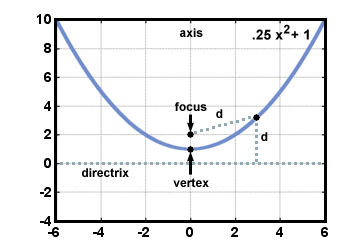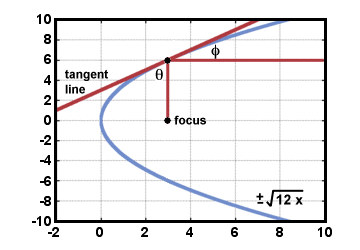Please wait while we process your payment
If you don't see it, please check your spam folder. Sometimes it can end up there.
If you don't see it, please check your spam folder. Sometimes it can end up there.
Please wait while we process your payment

By signing up you agree to our terms and privacy policy.
Don’t have an account? Subscribe now
Create Your Account
Sign up for your FREE 7-day trial
By signing up you agree to our terms and privacy policy.
Already have an account? Log in
Your Email
Choose Your Plan
Individual
Group Discount
Save over 50% with a SparkNotes PLUS Annual Plan!
 payment page
payment page
Purchasing SparkNotes PLUS for a group?
Get Annual Plans at a discount when you buy 2 or more!
Price
$24.99 $18.74 /subscription + tax
Subtotal $37.48 + tax
Save 25% on 2-49 accounts
Save 30% on 50-99 accounts
Want 100 or more? Contact us for a customized plan.
 payment page
payment page
Your Plan
Payment Details
Payment Summary
SparkNotes Plus
You'll be billed after your free trial ends.
7-Day Free Trial
Not Applicable
Renews July 21, 2025 July 14, 2025
Discounts (applied to next billing)
DUE NOW
US $0.00
SNPLUSROCKS20 | 20% Discount
This is not a valid promo code.
Discount Code (one code per order)
SparkNotes PLUS Annual Plan - Group Discount
Qty: 00
SparkNotes Plus subscription is $4.99/month or $24.99/year as selected above. The free trial period is the first 7 days of your subscription. TO CANCEL YOUR SUBSCRIPTION AND AVOID BEING CHARGED, YOU MUST CANCEL BEFORE THE END OF THE FREE TRIAL PERIOD. You may cancel your subscription on your Subscription and Billing page or contact Customer Support at custserv@bn.com. Your subscription will continue automatically once the free trial period is over. Free trial is available to new customers only.
Choose Your Plan
This site is protected by reCAPTCHA and the Google Privacy Policy and Terms of Service apply.
For the next 7 days, you'll have access to awesome PLUS stuff like AP English test prep, No Fear Shakespeare translations and audio, a note-taking tool, personalized dashboard, & much more!
You’ve successfully purchased a group discount. Your group members can use the joining link below to redeem their group membership. You'll also receive an email with the link.
Members will be prompted to log in or create an account to redeem their group membership.
Thanks for creating a SparkNotes account! Continue to start your free trial.
We're sorry, we could not create your account. SparkNotes PLUS is not available in your country. See what countries we’re in.
There was an error creating your account. Please check your payment details and try again.
Please wait while we process your payment

Your PLUS subscription has expired
Please wait while we process your payment
Please wait while we process your payment

Parabolas
As we saw in Quadratic Functions , a parabola is the graph of a quadratic function. As part of our study of conics, we'll give it a new definition. A parabola is the set of all points equidistant from a line and a fixed point not on the line. The line is called the directrix, and the point is called the focus. The point on the parabola halfway between the focus and the directrix is the vertex. The line containing the focus and the vertex is the axis. A parabola is symmetric with respect to its axis. Below is a drawing of a parabola.

If a parabola has a vertical axis, the standard form of the equation of the parabola is this: (x - h)2 = 4p(y - k), where p≠ 0. The vertex of this parabola is at (h, k). The focus is at (h, k + p). The directrix is the line y = k - p. The axis is the line x = h. If p > 0, the parabola opens upward, and if p < 0, the parabola opens downward.
If a parabola has a horizontal axis, the standard form of the equation of the parabola is this: (y - k)2 = 4p(x - h), where p≠ 0. The vertex of this parabola is at (h, k). The focus is at (h + p, k). The directrix is the line x = h - p. The axis is the line y = k. If p > 0, the parabola opens to the right, and if p < 0, the parabola opens to the left. Note that this graph is not a function.
Let P = (x, y) be a point on a parabola. Let l be the tangent line to
the parabola at the point P. Let  be a line segment whose
endpoints are the focus of the parabola and P. Every parabola has the
following property: the angle θ between the tangent line l and
the segment
be a line segment whose
endpoints are the focus of the parabola and P. Every parabola has the
following property: the angle θ between the tangent line l and
the segment  equal to the angle μ between the tangent line
and the axis of the parabola. This means (in a physical interpretation) that a
beam sent from the focus to any point on the parabola is reflected in a line
parallel to the axis. Furthermore, if a beam traveling in a line parallel to
the axis contacts the parabola, it will reflect to the focus. This is the
principle on which satellite dishes are built.
equal to the angle μ between the tangent line
and the axis of the parabola. This means (in a physical interpretation) that a
beam sent from the focus to any point on the parabola is reflected in a line
parallel to the axis. Furthermore, if a beam traveling in a line parallel to
the axis contacts the parabola, it will reflect to the focus. This is the
principle on which satellite dishes are built.

Please wait while we process your payment

